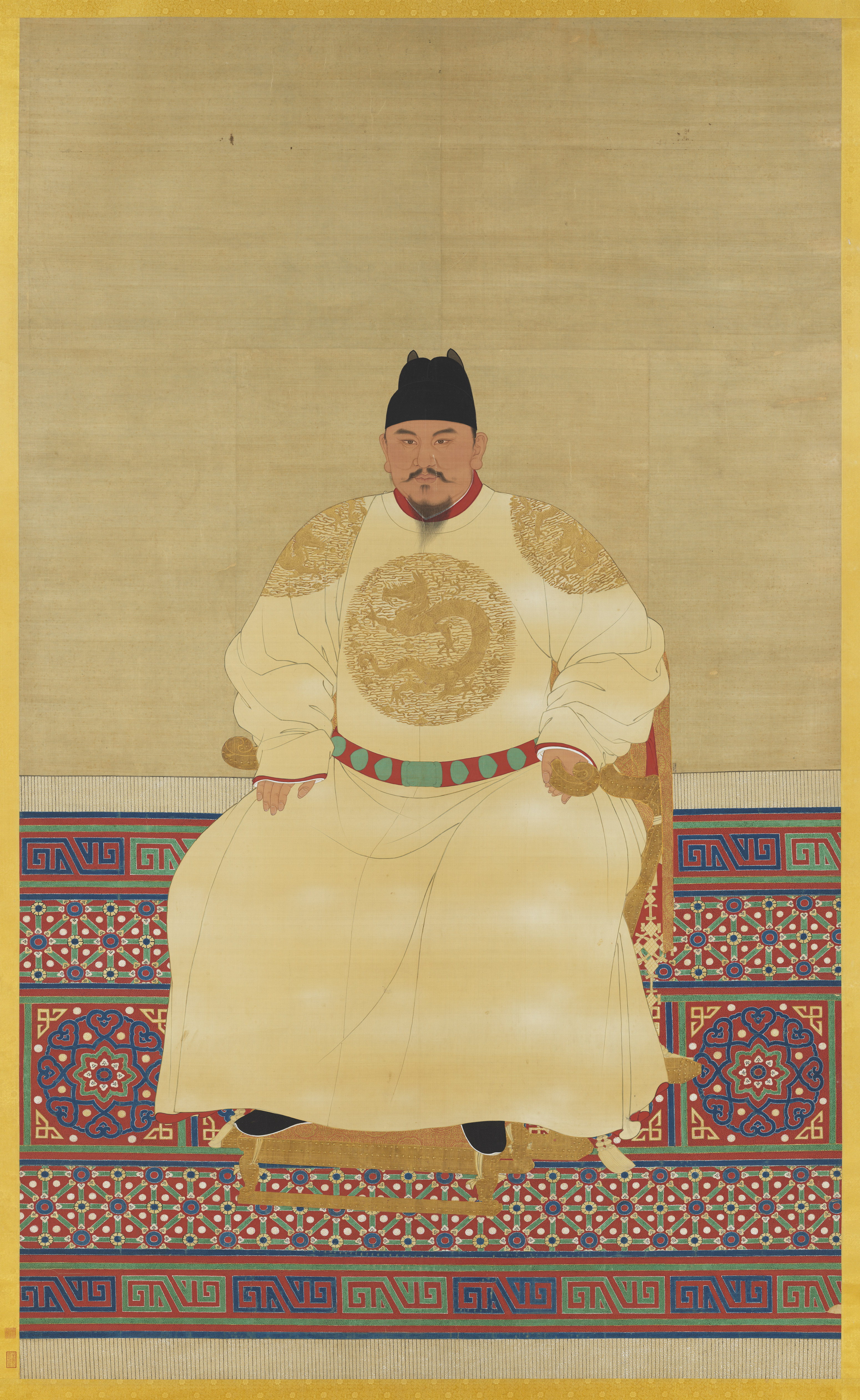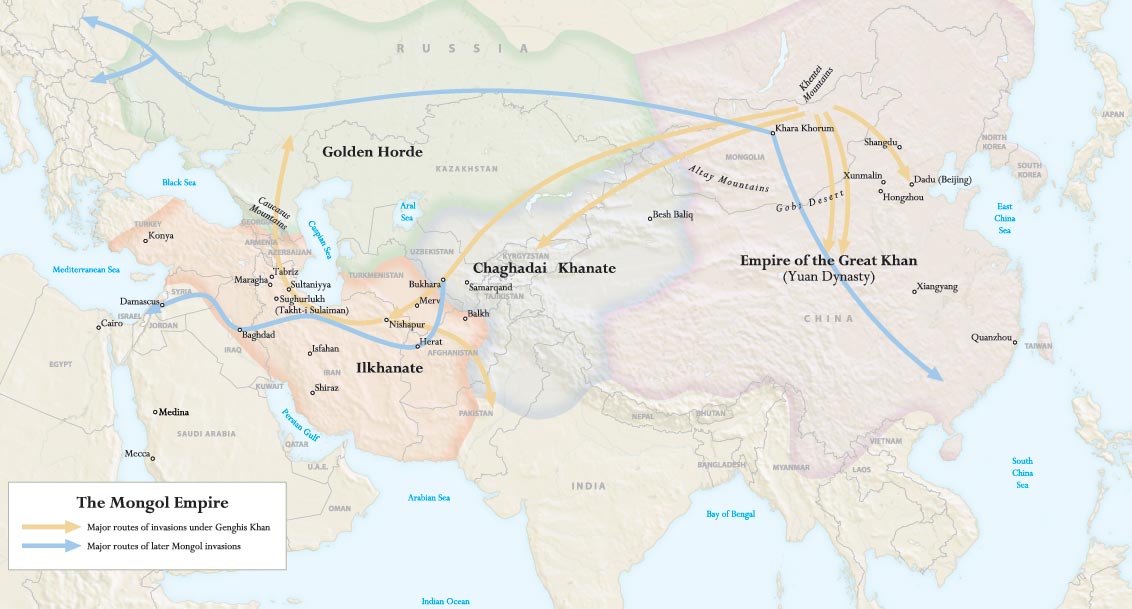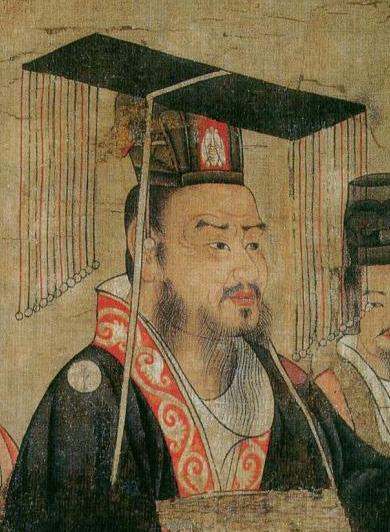|
Damao (hat)
Damao (), also known as Big hat in English, is a type of Chinese round hat with a wide brim, which was worn in the Ming dynasty. It was commonly worn by commoners of the Ming dynasty and is often seen in Ming dynasty portraits. It originated in the Yuan dynasty; it was derived from the Mongol's ''boli hat'' (). Design and construction Damao is composed of a wide brim, a high crown and a long string which is used as a tie. It could be made from straw or fabric. History Yuan dynasty Boli hat (ķÆ╣ń¼ĀÕĖĮ), a cymbal-shape hat with a round crown and with a brim which extended outwards and downwards, was one of the most popular hats worn by the Mongols (including the Yuan Emperors, officials and male commoners) in the Yuan dynasty. The use of boli hat by the ordinary Mongols in their every day lives in the Yuan dynasty. This eventually influenced the Han Chinese. File:ÕģāĶē▓ńø«õ║║õ┐æ.jpg, Figurine wearing a boli hat, Yuan dynasty. File:ÕģāµĆźķĆÆķ®┐.jpg File:ÕģāĶāīÕøŖĶ┤¤ÕīŻķ¬æķ ... [...More Info...] [...Related Items...] OR: [Wikipedia] [Google] [Baidu] |
Ming Dynasty
The Ming dynasty (), officially the Great Ming, was an Dynasties in Chinese history, imperial dynasty of China, ruling from 1368 to 1644 following the collapse of the Mongol Empire, Mongol-led Yuan dynasty. The Ming dynasty was the last orthodox dynasty of China ruled by the Han Chinese, Han people, the majority ethnic group in China. Although the primary capital of Beijing fell in 1644 to a rebellion led by Li Zicheng (who established the short-lived Shun dynasty), numerous rump state, rump regimes ruled by remnants of the House of Zhu, Ming imperial familyŌĆöcollectively called the Southern MingŌĆösurvived until 1662. The Ming dynasty's founder, the Hongwu Emperor (r. 1368ŌĆō1398), attempted to create a society of self-sufficient rural communities ordered in a rigid, immobile system that would guarantee and support a permanent class of soldiers for his dynasty: the empire's standing army exceeded one million troops and the naval history of China, navy's dockyards in Nanjin ... [...More Info...] [...Related Items...] OR: [Wikipedia] [Google] [Baidu] |
Yuan Dynasty
The Yuan dynasty (), officially the Great Yuan (; xng, , , literally "Great Yuan State"), was a Mongol-led imperial dynasty of China and a successor state to the Mongol Empire after its division. It was established by Kublai, the fifth khagan-emperor of the Mongol Empire from the Borjigin clan, and lasted from 1271 to 1368. In orthodox Chinese historiography, the Yuan dynasty followed the Song dynasty and preceded the Ming dynasty. Although Genghis Khan had been enthroned with the Han-style title of Emperor in 1206 and the Mongol Empire had ruled territories including modern-day northern China for decades, it was not until 1271 that Kublai Khan officially proclaimed the dynasty in the traditional Han style, and the conquest was not complete until 1279 when the Southern Song dynasty was defeated in the Battle of Yamen. His realm was, by this point, isolated from the other Mongol-led khanates and controlled most of modern-day China and its surrounding areas, including ... [...More Info...] [...Related Items...] OR: [Wikipedia] [Google] [Baidu] |
Cymbal
A cymbal is a common percussion instrument. Often used in pairs, cymbals consist of thin, normally round plates of various alloys. The majority of cymbals are of indefinite pitch, although small disc-shaped cymbals based on ancient designs sound a definite note (such as crotales). Cymbals are used in many ensembles ranging from the orchestra, percussion ensembles, jazz bands, heavy metal bands, and marching groups. Drum kits usually incorporate at least a crash, ride, or crash/ride, and a pair of hi-hat cymbals. A player of cymbals is known as a cymbalist. Etymology and names The word cymbal is derived from the Latin ''cymbalum'', which is the latinisation of the Greek word ''kymbalon'', "cymbal", which in turn derives from ''kymb─ō'', "cup, bowl". In orchestral scores, cymbals may be indicated by the French ''cymbales''; German ''Becken'', ''Schellbecken'', ''Teller'', or ''Tschinellen''; Italian ''piatti'' or ''cinelli''; and Spanish ''platillos''. Many of these deri ... [...More Info...] [...Related Items...] OR: [Wikipedia] [Google] [Baidu] |
Mongols
The Mongols ( mn, ą£ąŠąĮą│ąŠą╗čćčāčāą┤, , , ; ; russian: ą£ąŠąĮą│ąŠą╗čŗ) are an East Asian ethnic group native to Mongolia, Inner Mongolia in China and the Buryatia Republic of the Russian Federation. The Mongols are the principal member of the large family of Mongolic peoples. The Oirats in Western Mongolia as well as the Buryats and Kalmyks of Russia are classified either as distinct ethno-linguistic groups or subgroups of Mongols. The Mongols are bound together by a common heritage and ethnic identity. Their indigenous dialects are collectively known as the Mongolian language. The ancestors of the modern-day Mongols are referred to as Proto-Mongols. Definition Broadly defined, the term includes the Mongols proper (also known as the Khalkha Mongols), Buryats, Oirats, the Kalmyk people and the Southern Mongols. The latter comprises the Abaga Mongols, Abaganar, Aohans, Baarins, Chahars, Eastern Dorbets, Gorlos Mongols, Jalaids, Jaruud, Kharchins, Khishig ... [...More Info...] [...Related Items...] OR: [Wikipedia] [Google] [Baidu] |
Futou
Futou (; also pronounced and written as ), also known as () and (), was one of the most important form of Chinese headwear in ancient China with a history of more than one-thousand years. The first appeared in Northern Zhou under the reign of Emperor Wu where it became prevalent. It was also commonly worn in the Tang and Song dynasties. The was typically worn by government officials. The was originally a turban-like headwear which was tied at the back of its wearer's head, the two corners would go to the opposite directions thus acting as decorations. From the Sui to the Ming dynasties, the evolved and was developed based on the . The eventually came to assume a variety of shapes and styles. The shape of the worn by the government officials in the Song and Ming dynasties was based on the of the Tang dynasty which was its precursor. The was also introduced in both Unified Silla and Balhae and continued to be worn by government officials until the late Joseon. The w ... [...More Info...] [...Related Items...] OR: [Wikipedia] [Google] [Baidu] |
Sancai Tuhui
''Sancai Tuhui'' (, ), compiled by Wang Qi () and his son Wang Siyi (), is a Chinese ''leishu'' encyclopedia, completed in 1607 and published in 1609 during the late Ming dynasty, featuring illustrations of subjects in the three worlds of heaven, earth, and humanity. The work contains a large number of posthumous and contemporary depictions of Chinese Emperors. Title The title of this encyclopedia has been variously translated into English as "Illustrations of the Three Powers",http://ibs001.colo.firstnet.net.uk/britishlibrary/controller/subjectidsearch?id=8190&idx=1&start=4 "Collected Illustrations of the Three Realms", "Pictorial Compendium of the Three Powers", and others; in the original title, "Sancai" () refers to the three realms of "heaven, earth, and man", and "Tuhui" () means "collection of illustrations". Description This encyclopedia is organized into 106 chapters in 14 categories (astronomy, geography, biographies, history, biology, and such), with text and illustra ... [...More Info...] [...Related Items...] OR: [Wikipedia] [Google] [Baidu] |
Humao
Humao () is a type of brim hat which was used in the Tang dynasty by both Chinese men and women when horse-riding. Women of all social ranks (ranging from palace ladies to commoners) wore humao when horse-riding since the beginning of the Kaiyuan period (713ŌĆō741 AD), during the Mid-Tang dynasty. The humao was a type of veil-less hat (which contrasted to the weimao); therefore, it allowed for the faces and hair to be exposed. Gallery File:Horse and female rider, unfired clay and pigment, Tang Dynasty.JPG File:Tang Pottery Horse & Rider (9948238646).jpg File:Tang Pottery Horse and Rider.jpg Similar items * Damao (hat) * Gat * Weimao See also * Hanfu * Hufu * Hanfu headgear * List of hats and headgear * Liangmao Liangmao (), also known as Hakka hat and Hakka bamboo hat, is a traditional bamboo and/or straw hat worn by the Hakka people who perform manual work, such as farming and fishing. Hakka women wore it when working in the fields. The liangmao is ma ... * ... [...More Info...] [...Related Items...] OR: [Wikipedia] [Google] [Baidu] |
Weimao
Weimao () is a type of wide-brimmed hat with a shoulder-length veil hanging. The weimao was a popular form of head covering during the Tang dynasty. It was invented during either the Sui or the early Tang dynasty, according to Liu Zhiji and Zhang Yanyuan. History Sui and Tang dynasty By the end of the Sui dynasty, the mili, which was previously worn, became less conservative and evolved into the weimao as it was no longer required to conceal the entire body and instead only the face had to be concealed. In the early and middle Tang dynasty period, it was fashionable for aristocratic women to wear weimao when they went on excursions, a practice which these women borrowed from the northwestern nomadic men. By the time of Wu Zetian's ascendancy, the weimao was in fashion while the mili had gradually disappeared. The fashion of wearing weimao eventually declined and disappeared in the 8th century before being revived in the 10th century in the Song dynasty. Song dynasty In ... [...More Info...] [...Related Items...] OR: [Wikipedia] [Google] [Baidu] |
Gat (hat)
A ''gat'' ( ) is a Korean traditional hat worn by men along with ''hanbok'' (Korean traditional clothing) during the Joseon period. It is made from horsehair with a bamboo frame and is partly transparent. Most ''gat'' are cylindrical in shape with a wide brim on a bamboo frame. Before the late 19th century, only noble class men could wear ''gat'', which represented their social status and protected their topknots (). Artisans who make ''gat'' are called ''ganniljang'' (), from ''gannil'' (, a compound of two words ''gat'' and ''il'' (work); "''gat'' making") + ''jang'' ( "artisan, craftsperson, master of a craft"). As ''gannil'' requires artisanship throughout a complex series of techniques involving an array of materials, it has been designated as Intangible Cultural Property No. 4 on December 24, 1964. History The origins of ''gat'' date back to ancient times. Usually, the following hats are considered to be the first specimens of what is known as gat today: the so-called ''i ... [...More Info...] [...Related Items...] OR: [Wikipedia] [Google] [Baidu] |
Hanfu
''Hanfu'' () is the traditional styles of clothing worn by the Han Chinese. There are several representative styles of ''hanfu'', such as the (an upper-body garment with a long outer skirt), the (an upper-body garment with a long underskirt), the and the , and the (an upper-body garment with ku trousers). Traditionally, ''hanfu'' consists of a ''paofu'' robe, or a ''ru'' jacket worn as the upper garment with a ''qun'' skirt commonly worn as the lower garment. In addition to clothing, hanfu also includes several forms of accessories, such as headwear, footwear, belts, jewellery, and handheld fans. Nowadays, the hanfu is gaining recognition as the traditional clothing of the Han ethnic group, and has experienced a growing fashion revival among young Han Chinese people in China and in the overseas Chinese diaspora. After the Han dynasty, ''hanfu'' developed into a variety of styles using fabrics that encompassed a number of complex textile production techniques, part ... [...More Info...] [...Related Items...] OR: [Wikipedia] [Google] [Baidu] |
Hufu (clothing)
(; ), also referred as clothing, nomadic dress, 'barbarian' clothing or dress, or foreign dress, is a generic term which refers to any clothing which was worn in ancient China and its surrounding regions by non-Han Chinese people. This term is also used to refer to foreigner's dress or clothing of foreign origins in ancient China. The introduction of -style garments and attire in China occurred by the time of King Wuling of Zhao. Terminology The term '' was adopted to refer to the non-Han Chinese population which could include the ancient 'Hu' northern nomadic people, such as. the Xiongnu, as well as the people from the Western regions such as Sogdians, the Sasanid Persian, the Turkic people (), Uyghur ( or ), Tibetans (), and the Khitans () who lived in the north and west regions of the empire. Cultural significance and distinction The traditional way to distinguish between and , Chinese clothing, is by looking direction of the garment collar. Chinese collar customs ... [...More Info...] [...Related Items...] OR: [Wikipedia] [Google] [Baidu] |
List Of Hanfu Headwear
Chinese headwear have a long history. According to some scholars, China used to be called "the Kingdom of Headwear" by people due to its variety of colourful and artistic style of hair ornament. There were various categories for headwear including (), (), (), (), and (). Chinese people also wore Chinese hairpins. Chinese women, in particular, like to use flowers (either natural or artificial) as hair decorations for centuries; they also wore shubi in their hair and sometimes wore the honggaitou on their weddings. Types of Headwear for males Types of headwear for females See also * Chinese hairpin * Hanfu * Honggaitou * List of Hanfu * Shubi - Chinese comb *Tian-tsui {{Short description, Traditional Chinese feather art Tian-tsui (Chinese traditional: ķ╗×ń┐Ā, Chinese simplified: ńé╣ń┐Ā, pinyin: diŪÄncu├¼, "dotting with kingfishers") is a style of Chinese art featuring kingfisher feathers. For 2,000 years, the C ... References {{Types of Han Chinese clothing ... [...More Info...] [...Related Items...] OR: [Wikipedia] [Google] [Baidu] |





.jpg)




